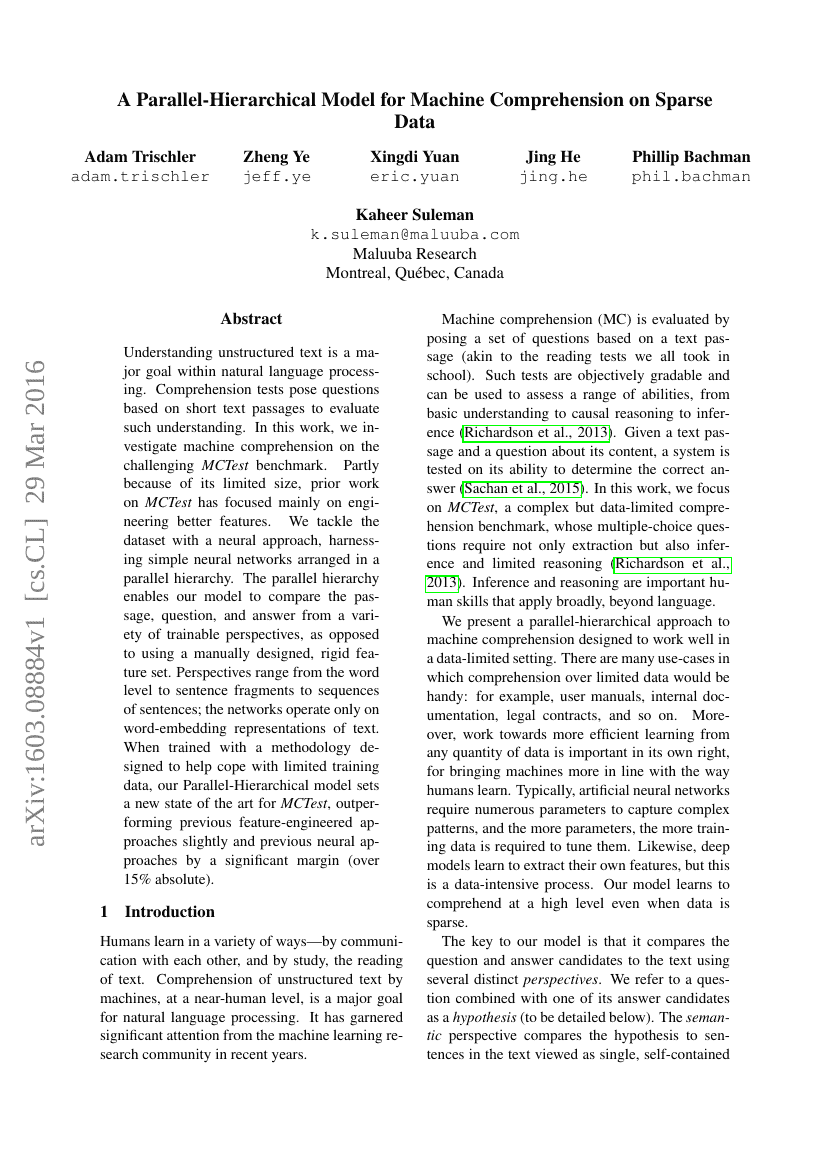Command Palette
Search for a command to run...
A Parallel-Hierarchical Model for Machine Comprehension on Sparse Data
Adam Trischler; Zheng Ye; Xingdi Yuan; Jing He; Phillip Bachman; Kaheer Suleman

Abstract
Understanding unstructured text is a major goal within natural language processing. Comprehension tests pose questions based on short text passages to evaluate such understanding. In this work, we investigate machine comprehension on the challenging {\it MCTest} benchmark. Partly because of its limited size, prior work on {\it MCTest} has focused mainly on engineering better features. We tackle the dataset with a neural approach, harnessing simple neural networks arranged in a parallel hierarchy. The parallel hierarchy enables our model to compare the passage, question, and answer from a variety of trainable perspectives, as opposed to using a manually designed, rigid feature set. Perspectives range from the word level to sentence fragments to sequences of sentences; the networks operate only on word-embedding representations of text. When trained with a methodology designed to help cope with limited training data, our Parallel-Hierarchical model sets a new state of the art for {\it MCTest}, outperforming previous feature-engineered approaches slightly and previous neural approaches by a significant margin (over 15\% absolute).
Code Repositories
Benchmarks
| Benchmark | Methodology | Metrics |
|---|---|---|
| question-answering-on-mctest-160 | syntax, frame, coreference, and word embedding features | Accuracy: 75.27% |
| question-answering-on-mctest-500 | Parallel-Hierarchical | Accuracy: 71% |
| question-answering-on-mctest-500 | syntax, frame, coreference, and word embedding features | Accuracy: 69.94% |
Build AI with AI
From idea to launch — accelerate your AI development with free AI co-coding, out-of-the-box environment and best price of GPUs.